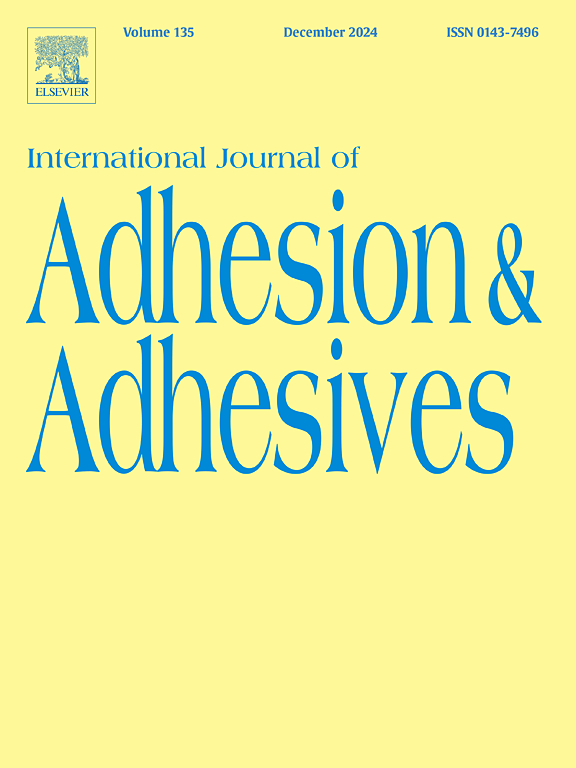Effect of universal adhesives and application modes on the bond strength of amalgam-contaminated dentin
IF 3.2
3区 材料科学
Q2 ENGINEERING, CHEMICAL
International Journal of Adhesion and Adhesives
Pub Date : 2025-01-23
DOI:10.1016/j.ijadhadh.2025.103945
引用次数: 0
Abstract
Objective
This study evaluated the bond strength of universal adhesive systems and different application modes for amalgam-contaminated dentin.
Methods
Sixty mandibular third molars were embedded in acrylic resin, and their dentin was exposed. The specimens were divided into amalgam-contaminated dentin (ACD) and uncontaminated dentin (UD) groups. Thirty teeth were restored with amalgam, and aged by thermal cycling and chewing simulation, after which their amalgam was removed. Teeth were assigned to three adhesive groups: G-Premio Bond (Gp), Scotchbond Universal (SB), Clearfil S3 Bond (CS3), and two subgroups: etch-and-rinse (ER) and self-etch (SE) (n = 5). Adhesives were applied in both ER and SE modes, following the manufacturers' instructions. For the ER procedure, the dentin surface was roughened with 37.5 % orthophosphoric acid for 15 s, followed by a water rinse for 15 s. The universal adhesives were then applied according to the manufacturers’ guidelines. Microtensile bond strength (μTBS) was tested immediately or after water aging. Statistical analysis was performed using three-way ANOVA and Bonferroni correction.
Results
Amalgam contamination decreased μTBS in all groups. This effect was significant in Gp-ER/aged, Gp-SE/aged, SB-SE/aged, CS3-ER/aged, CS3-ER/immediate, and CS3-SE/aged groups (p<0.05). Aging protocol decreased μTBS in Gp-ER, CS3-ER, and CS3-SE for UD, and in all except for SB-ER for ACD (p<0.05). Except for the Gp/aged and SB/aged groups, ER application of adhesive agents exhibited higher μTBS values than SE. This value was significant on the UD surface in the Gp/immediate group (p <0.05), while it was significant on the ACD surface in all groups except Gp/aged and SB/immediate groups (p<0.05).
Conclusion
Corrosion products from amalgam restorations reduce adhesive bond strength to dentin. The ER application showed higher bond strength on the ACD and UD surfaces.
Clinical significance
Composite materials are often preferred to replace removed amalgam restorations. Amalgam-contaminated dentin surfaces exposed after failed amalgam restorations are removed in the clinic should be treated differently from uncontaminated dentin surfaces. Adhesive agents and application modes should be selected accordingly for clinical procedures.
求助全文
约1分钟内获得全文
求助全文
来源期刊

International Journal of Adhesion and Adhesives
工程技术-材料科学:综合
CiteScore
6.90
自引率
8.80%
发文量
200
审稿时长
8.3 months
期刊介绍:
The International Journal of Adhesion and Adhesives draws together the many aspects of the science and technology of adhesive materials, from fundamental research and development work to industrial applications. Subject areas covered include: interfacial interactions, surface chemistry, methods of testing, accumulation of test data on physical and mechanical properties, environmental effects, new adhesive materials, sealants, design of bonded joints, and manufacturing technology.
 求助内容:
求助内容: 应助结果提醒方式:
应助结果提醒方式:


